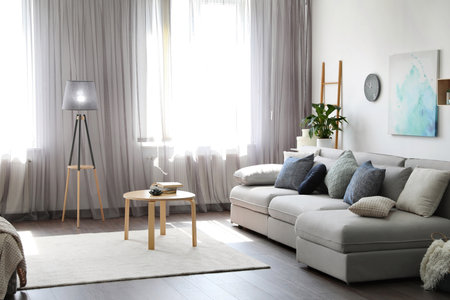A Brief Journey Into the History of the Luo Pan
Step into the world of Feng Shui and you’ll encounter a remarkable instrument: the Luo Pan. This ancient compass, rich with symbolism and intricate markings, traces its origins back over two millennia to imperial China. The Luo Pan was never just a tool for physical navigation; rather, it served as a sacred bridge between the energies of earth and sky, guiding emperors, scholars, and geomancers in harmonising their surroundings. As centuries unfolded, the Luo Pan’s wisdom transcended borders, quietly weaving its way into new lands and cultures. Today, amidst the red brick terraces and lush gardens of Britain, this storied compass is enjoying a quiet renaissance. More than a relic of the past, the Luo Pan now sits comfortably alongside contemporary British interiors—its presence whispering tales of distant dynasties while inviting a fresh approach to home harmony. In this gentle convergence of East and West, the Luo Pan becomes more than an object; it is a living connection that unites traditions across time, offering modern British homes a touch of spiritual elegance rooted in centuries-old wisdom.
2. The Art of the Luo Pan: Structure and Symbolism
Stepping into a centuries-old British home, one is often enveloped by stories whispered through oak beams and weathered stone. When a Luo Pan—the traditional Feng Shui compass—finds its place within these heritage walls, it invites an entirely new narrative woven from the threads of Eastern philosophy and Western history. The Luo Pan is not just a tool; it’s an intricate tapestry of symbols, directions, and energies that speaks to those attuned to subtle flows within a space.
The Unique Structure of the Luo Pan
Unlike a standard compass, the Luo Pan is a marvel of craftsmanship. It consists of concentric rings—sometimes over thirty—each meticulously etched with Chinese characters, trigrams, and heavenly stems. At the centre lies a magnetic needle floating atop a delicate pivot, its unwavering orientation guiding practitioners in their readings. When placed on the flagstone floors or near sash windows of a Georgian townhouse, the Luo Pan becomes an instrument bridging ancient wisdom with British domestic life.
Symbolism Intertwined with Heritage
The layers of meaning within each ring are profound. For example, the innermost rings might denote fundamental elements such as wood, fire, earth, metal, and water—elements echoed in the materials of British homes: timber beams, stone hearths, wrought-iron balustrades. The outer rings encode complex calculations for assessing auspicious alignments, subtly blending with British traditions of spatial harmony found in cottage gardens or symmetrical Victorian layouts.
Luo Pan Rings and Their Interpretations in British Homes
| Luo Pan Ring | Traditional Meaning | Interpretation in British Heritage Homes |
|---|---|---|
| Heavenly Stems & Earthly Branches | Time cycles and cosmic influences | Aligning rooms to foster seasonal comfort and historical continuity |
| Eight Trigrams (Ba Gua) | Balance of natural forces | Creating symmetry between old fireplaces and new entrances for energetic flow |
| 24 Mountains | Precise directional analysis | Navigating irregular floorplans while respecting original architecture |
| Five Elements | Material energy interaction | Selecting furnishings that harmonise with existing period features |
In this merging of traditions, every carved cornice or weathered brick becomes more than décor—it becomes part of an energetic dialogue guided by the Luo Pan’s language. Each symbol on the compass is reinterpreted through the lens of British heritage living: where east-facing drawing rooms catch morning light as per Feng Shui counsel, or where garden paths gently curve to welcome both guests and good fortune alike. In these homes, the art of the Luo Pan isn’t just preserved—it’s reimagined, awakening new potential within familiar walls.
![]()
3. Feng Shui Meets the UK: Adapting the Luo Pan in British Spaces
Imagine stepping into a red-bricked terraced house nestled on a leafy street in Brighton or a chic flat overlooking the Thames in London. For many British homeowners, these familiar settings have become backdrops for an unexpected meeting of East and West: the integration of the Luo Pan compass into daily life. Stories abound of individuals seeking more than just aesthetic appeal in their homes—they are inviting harmony and balance by drawing on ancient Feng Shui principles.
Take, for example, Mrs. Evans, who lives in a Victorian semi-detached house in Manchester. Curious about her home’s energy flow, she consulted a Feng Shui practitioner armed with a Luo Pan. Together, they mapped the unique orientation of her living space, aligning furniture to harness positive qi while respecting the original architectural quirks—like sash windows and fireplaces—that make British homes so charming. The result? A living room that not only felt cosier but seemed to uplift everyone who entered.
Meanwhile, in a bustling London flat, Tom and Alex found themselves struggling with sleepless nights and lacklustre mornings. Inspired by stories from friends, they decided to experiment with Feng Shui. With guidance, they used the Luo Pan to determine the optimal placement for their bed and study area, mindful of both the building’s layout and their own routines. By blending traditional wisdom with practical adjustments—like positioning mirrors away from doors and using local plants—they noticed subtle yet profound improvements in their wellbeing.
The beauty of adapting the Luo Pan to British spaces lies in its flexibility. Whether it’s a cottage in Cornwall or a modern apartment in Edinburgh, homeowners are learning to honour both the compass’s ancient insights and the beloved features of their homes. Rather than imposing rigid rules, practitioners encourage gentle tweaks—placing a favourite armchair where light flows best or arranging bookshelves to invite calm—all while maintaining the character that makes each home uniquely British.
This quiet revolution is not about abandoning tradition but rather weaving new threads of harmony through spaces steeped in history. As more British residents share their experiences, a tapestry emerges: one where East meets West, intuition meets analysis, and every home becomes a sanctuary shaped by both heritage and heart.
4. Case Study: A Cosy Cottage Transformed
Step into the warm, gilded corners of an English cottage as it undergoes a Feng Shui makeover, guided by the gentle compass of the Luo Pan. The story begins in the heart of the Cotswolds, where ivy curls around honey-hued stone and history whispers through every timber beam. Here, Mrs. Penelope Wright, a lover of all things traditional and British, felt that her charming home—despite its picturesque appearance—lacked a sense of peace and energy flow.
With curiosity piqued, she invited a Feng Shui consultant who brought along a Luo Pan—a tool foreign to most British interiors yet surprisingly harmonious with the cottage’s old-world character. The process began with an assessment of each room’s orientation and how it aligned with the natural energies mapped out by the Luo Pan.
Initial Observations
| Room | Before Feng Shui | Luo Pan Insight |
|---|---|---|
| Sitting Room | Dim lighting, cluttered shelves, drafty corners | Blocked energy at the north; needs openness and warmth |
| Kitchen | Busy layout, stove opposite sink, mismatched elements | Conflicting fire and water energies; requires balancing |
| Main Bedroom | Bed facing door, cold drafts from window | Poor rest direction; realign bed for restorative sleep |
The Transformation Process
Using the Luo Pan’s intricate markings, the consultant recommended subtle yet powerful shifts. The sitting room’s armchairs were rotated towards the southeast—inviting sunlight and good fortune. Clutter was cleared from entryways to allow energy to meander gently like a Cotswold brook. In the kitchen, Penelope swapped positions of certain appliances according to Luo Pan readings, ensuring fire (the stove) and water (the sink) no longer clashed.
A Newfound Harmony
Within weeks, Penelope noticed an uplifting change: morning light spilled brighter across her breakfast table, guests lingered longer over tea, and sleep came easier under cosy patchwork quilts. While her friends marvelled at this intangible shift, Penelope would simply smile—her secret lying in ancient Chinese wisdom now seamlessly woven into her quintessentially British retreat.
5. Practical Tips for Bringing Feng Shui Home
If you’re curious about weaving Luo Pan wisdom into your British abode, the journey can be both enlightening and delightfully down-to-earth. While the ancient compass might seem exotic, its principles can beautifully complement the daily rhythms of life in a UK home. Here’s how you can begin to experiment with authenticity and ease.
Start with Your Garden: Embracing Nature’s Flow
Many British homes treasure their gardens—whether it’s a petite city plot or a sprawling country lawn. Use your Luo Pan to find the most auspicious orientation for seating areas or flowerbeds. Aligning garden paths to favourable directions can encourage positive energy flow, turning afternoon tea into an uplifting ritual under harmonious skies.
Fireplaces and Focal Points: Heart of the Home
Fireplaces have long been the soul of British living rooms. Position yours, if possible, according to Luo Pan readings—ideally in locations that support warmth, prosperity, and social connection. If your hearth is fixed, enhance its harmony by arranging seating or mirrors based on compass guidance, inviting comforting balance to family gatherings.
Entrances and Hallways: Welcoming Good Qi
The British front door is more than a threshold—it’s a statement of welcome. Use the Luo Pan to identify auspicious entry directions. Consider placing plants or artworks near your entrance that reflect supportive elements (like wood or water), gently ushering good energy into your hallway every time you return from a rainy school run or crisp countryside walk.
Bedrooms: Sanctuaries for Rest
Arrange beds so that their headboards are aligned with harmonious directions as indicated by the Luo Pan. This subtle shift can foster restful sleep—a true luxury during Britain’s long winter nights. Choose soft furnishings in colours that echo elemental balance; think tranquil blues or grounding earth tones for peaceful dreams.
Keep It Personal: Blending Tradition and Modernity
No need to overhaul your beloved Victorian terrace or modern flat overnight. Instead, let the Luo Pan guide small, meaningful adjustments—a bookshelf here, a reading chair there—always tailored to your lifestyle and tastes. The magic lies in gentle experimentation and trusting your own sense of what feels right within your uniquely British context.
6. A Modern British Perspective: Embracing the Old and the New
In today’s Britain, where tradition and innovation often walk hand-in-hand, the Luo Pan has found its place within a tapestry of diverse homes and lifestyles. More than just an ornate compass, it becomes a bridge between East and West—a tool that invites mindful living amidst the familiar backdrop of rolling countryside, Victorian terraces, or urban flats. By introducing the Luo Pan into British homes, families are offered a gentle prompt to pause, reflect, and realign their living spaces with intention.
For many modern Britons, well-being is about more than minimalism or trend-led interiors; it is about cultivating harmony—both seen and unseen. The Luo Pan offers a tactile way to connect with the energies of one’s environment, encouraging householders to consider not just how their homes look but how they feel. Whether placed on an oak mantelpiece or consulted before rearranging furniture in a bustling London flat, this ancient instrument becomes part of a daily ritual, nurturing balance amidst busy lives.
Embracing the Luo Pan means welcoming both heritage and possibility. It is not about replacing cherished British traditions but weaving them together with new practices that honour diversity and open-mindedness. In this sense, the Luo Pan does more than guide spatial arrangement—it nurtures a spirit of curiosity and respect for all cultures within the heart of the home.
Ultimately, whether one believes in energy flow or simply enjoys meaningful rituals, using the Luo Pan can inspire deeper awareness of space and self. It gently reminds us that our homes are living stories—shaped by history yet ever-evolving—and that in embracing both old wisdom and fresh perspectives, we create sanctuaries that truly support our well-being.


